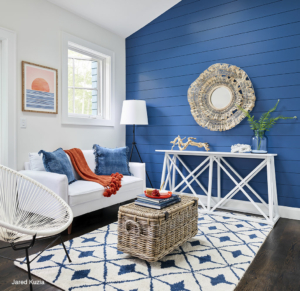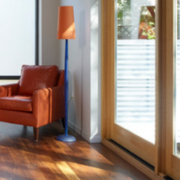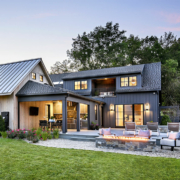What’s the Hype About Finger-Jointed Trim, Nickel Gap & More?
Finger-jointed mouldings are a unique product that you’ve probably seen at your local home improvement store, but you’ve likely never given them a second thought. Well, we’re here to tell you that you should! While we pride ourselves on the quality when it comes to all of our hardwood products, finger joint mouldings and S4S lumber are quickly becoming best-sellers (and for good reason). Whether you use them to update your trim boards or as another DIY carpentry project like shelves or benches, finger joint products are great options for almost all painted applications.
But, at Baird Brothers Fine Hardwoods, our finger-jointed hardwoods aren’t what you’ll find in big box stores – they’re better. Why? It’s all about the species of wood used to create them!
Breaking Down a Finger Joint
A finger joint is when two boards are cut with a series of interlocking fingers that fit together, creating a strong and stable joint. In fact, they’re one of the most common joints in woodworking.
Finger joints (or comb joints) are made with a router that cuts grooves into each side of one board before they’re glued together and clamped. Their edges interlock with each other like fingers (hence the name) resulting in a joint that’s even stronger than gluing two pieces together on their flat surfaces!
When to Use Finger-Jointed Hardwoods
Finger joint mouldings are commonly used for trim boards and other painted DIY decor projects. At Baird Brothers, these products are available in high-quality, locally sourced, knot-free lumber that can be used for shiplap paneling, trim and more. Like solid hardwood products, finger-jointed hardwoods deliver a tight, seamless fit.

Better Building Materials
When considering this type of material, resist the urge to immediately visit just any nearby store that claims to offer the product… and here’s why. When you shop at a big box location, you’ll find that their finger-jointed building materials are finger joint pine – one of the softest wood options – and often manufactured overseas. Not only are these types of products susceptible to damage, dents and scratches, but they’re also not American-made!
At Baird Brothers, however, our finger-jointed products are created with poplar cutoffs. (We have options for casing, crowns and baseboards, chair rails, S4S lumber and shiplap.) The result is a durable hardwood product that is more resistant to moisture, dents and scratches.
When searching for a product, you may have also noticed MDF (medium-density fiberboard). While MDF (made from wood fiber, resin and wax) is also offered by Baird Brothers, it’s important to understand how it differs from finger-jointed mouldings before making a purchase.
See the comparison for yourself:
The Best Product for Your Home Improvement Project
Poplar finger-jointed wood products are superior to pine finger joints and MDF for several reasons:
- Poplar wood is stronger than both pine and MDF. It won’t show signs of wear and tear as fast, and it’s a less flimsy product (allowing it to be more easily installed by one person).
- Poplar is less prone to warping.
- Poplar finger joint products are (obviously) made from wood, and they are less vulnerable to extreme heat and fire than MDF.
- MDF is harder on saws and blades, and it can create a lot of dust when making cuts.
- Unlike pine, poplar doesn’t contain sap that can seep through primer and paint.
Make Painting Your Millwork Easy
Many of our finger-jointed products are primed and ready to install – making your reno, new build or repair that much easier! The straight, smooth grain pattern of poplar is great for painted projects, especially when compared to pine.
Softwoods like cedar, redwood and pine have sap (not to mention knots), and that sap can bleed through primer and paint. Poplar doesn’t have this issue, and that’s why we use it! Primed pine needs an oil-based primer – and probably some additional sanding – before it’s ready to be painted with multiple top coats
Some Disadvantages of Finger Jointed Trim
While finger joints are cost-effective and durable, there are still some downsides to them.
-
- This type of product is best suited for painted applications, because otherwise, it can appear like a patchwork quilt (due to the fact that it’s composed of numerous cutoffs).
- The interlocking joints can be difficult to smooth out by sanding if you don’t start with a quality product.
- The finger joints can be susceptible to moisture if they’re not fastened or glued properly (i.e. – make sure you’re purchasing from an experienced manufacturer).
How Baird’s Finger Joints Stack Up

Finger joints are used in carpentry projects where a strong joint is necessary, but why are the finger-jointed products from Baird Brothers so great? Well, they’re made on-site with high-quality hardwood that’s masterfully pieced together.
Primed, Finger-Jointed Trim
If you’re looking to install painted trim, crown or baseboard – as opposed to a stained species of hardwood – finger-jointed trim and mouldings are the way to go. Not only do they come pre-primed, but they’re also considerably stronger than MDF while still delivering the reliability of solid hardwood.
Primed, Finger-Jointed Dimensional Lumber
Working on a project that will eventually be painted (like we did with our mudroom bench)? Or, planning to add wainscoting in your dining room for that extra wow factor? Finger-jointed dimensional lumber might be exactly what you’re looking for! (And, just like with our finger-jointed mouldings, you’re starting a step ahead since it’s already primed.)
Primed, Finger-Jointed Shiplap
Shiplap, shiplap, shiplap. Like it or love it, it’s not going anywhere anytime soon! So, if you’ve been thinking about adding it to a space in your home, what are you waiting for? Sure, we have shiplap available in just about every hardwood species under the sun, but primed, finger-jointed poplar shiplap is one of our best sellers. Go for a clean, crisp white or add some flair with green or blue like TOH did when using our product for their Cottage on the Cape build!

Get the Best American-Made Finger-Jointed Mouldings
When it comes to a trim project in a 2,000-square-foot house, it will cost about $600 more to use Baird Brothers’ expertly made finger joint products than it will with MDF. Isn’t that an investment worth making after reading all of the pros and cons?
If you’re looking for a finger-jointed trim product, shiplap, or dimensional lumber, you’ll find it at Baird Brothers Fine Hardwoods. Our local store location in Canfield, Ohio has endless in-stock moulding options that are available for in-store pick-up, but we also ship nationwide! So, whether you live in Ohio or Oregon, you can always build it better with Baird!
Looking for inspiration? Don’t forget to check out our blogs and content studio for a variety of projects, DIY tutorials and more.











